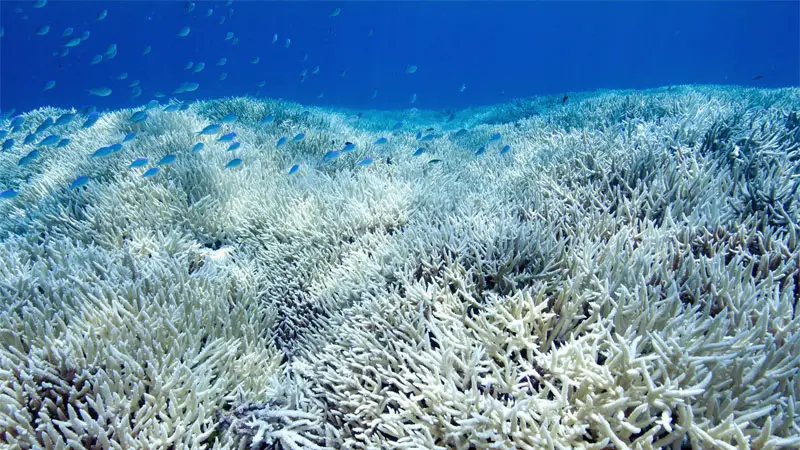Before we get into the different types of coral reefs, it is important to understand just exactly what they are. What the forests are to life above water, the reefs are the same to life underwater. And, just as the world above is seeing the continued destruction of its forests, the world of water is experiencing the same with massive dying of its coral reefs.
However, while deforestation is most definitely a man-made catastrophe, the number of reefs dying seems to be natural and this has a negative effect on various endangered species. Unfortunately, we do not have any idea how to address that problem because we cannot understand it.
We are not even one hundred percent sure about the cause. All we have are theories. For all we know, this is part of the cycle of life in the seas. To make way for more, and new coral, the old passes on.
How Are Coral Reefs Made?
Corals reefs are made by, well, corals! The term ‘corals’ is a collective name for miniscule marine creatures that secrete hard carbonate matter that, in time, form into exoskeletons.
When those creatures die, the exoskeletons are left behind and are used by more corals as a place to anchor themselves to. Eventually, the colony of corals expands until it is big enough to be named a coral reef.
And according to our marine biologists, the three main types of coral reefs are the atoll, fringing, and barrier. But a fourth type, the patch reef also exists. Let’s go over each one of them.
See Also: 7 Types of Ecology
Types of Coral Reefs
1. Fringing Reef
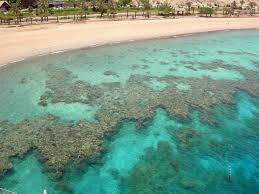
Fringing reefs grow very close to the shoreline. In fact, fringing reefs look like they originated from the shoreline, which they did not. It just happens to look that way.
This type of reef is most common in the Bahamas. There are also plenty of fringing reefs in the Red Sea. Many types of fish and eels make their home within a coral reef.
2. Barrier Reef
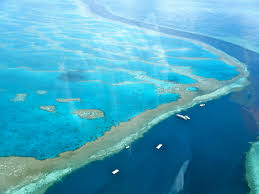
Unlike the fringing reef, the barrier type reef is separated from the shoreline by either a deep channel or a lagoon. The most famous barrier reef system in the world can be found off the coast of Australia. It is aptly named ‘the Great Barrier Reef’.
The Great Barrier Reef has almost 3,000 individual reefs and over nine hundred islands within its ecosystem that occupies 344,400 square kilometers. It is completely made by living organisms smaller than your finger. It occupies an area so huge that it can be seen from space.
Aside from the Great Barrier Reef, other notable barrier reef systems in the seas are the New Caledonian Barrier Reef, the Mesoamerican Barrier Reef, and the Belize Barrier Reef systems.
3. Atoll
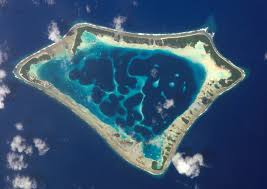
From the air, an atoll reef looks like a patch of land surrounding an inner lagoon. When looking at pictures of atolls, you can’t help but marvel at how beautiful these natural wonders are. Considering how these things are made, we are lucky to have so many of them.
The formation of an atoll is a very complicated process. Coral reefs form around an island. Over time, so much time, the island sinks under the sea. As the island begins sinking, the gap between the new shores and the reef is filled by new coral.
This process repeats itself until a mountain tip is what remains of the island. The corals build their colonies around that tip.
Finally, even the tip of the island sinks. The corals, who need light, build their colonies where they can get the most light. In case of a volcanic island, this is the rim of the caldera. As time passes again, the island continues to sink lower, and the corals keep building upward.
Eventually the reef that was built on the rim is the only visible trace of the coral reef. The end result is an atoll.
4. Patch Reef
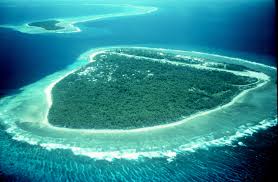
A patch reef is a minor type of reef. It is so named because it is usually an isolated patch of small, coral reef growth.
In the Florida Keys, patch reefs are a very common occurrence. Between Soldier Key and North Key Largo, there are more than four thousand identified patch reefs. Just like any coral reef, patch reefs need light to survive, and grow very close to shore.
Coral reefs are an amazing part of nature. It is a home for the creatures that build it, as well as function as an eco-system for other creatures in the sea. Once the corals die, a memorial of them is left behind. The exoskeletons of past corals are then built upon by other corals.
It’s truly amazing. It’s a home, a memorial, a piece of architecture, and in the end, creates an entire ecosystem. The Great Barrier Reef, and the other different types of coral reefs, stand as good examples of how important corals are to marine life in general.

